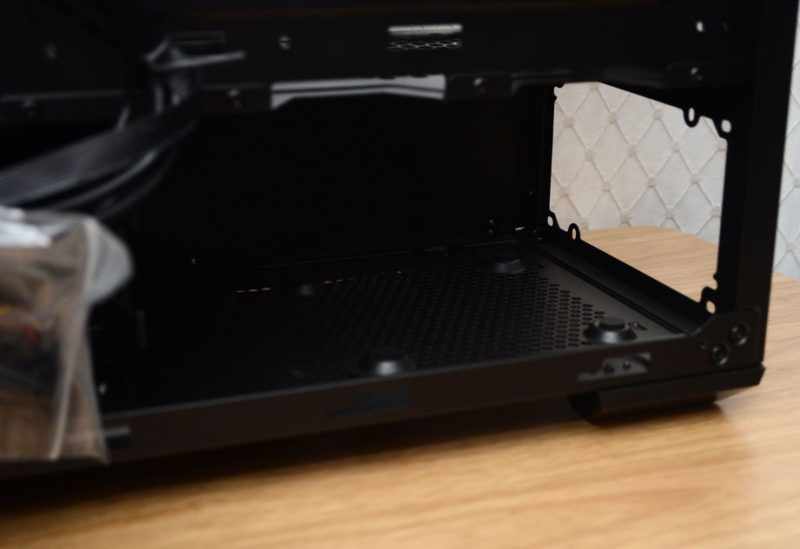Cooler Master Masterbox MB520 Mid-Tower Chassis Review
Peter Donnell / 6 years ago
A Closer Look – Interior
The side panel mounts using four thumbscrews, much like many tempered glass panels do. With it removed, there’s a huge amount of access to the chassis interior, which will make the install process nice and easy. There’s plenty of length to the chassis too, meaning excellent clearance for large expansion cards and big coolers in the front panel. There are cable routing holes, as well as a large cut-out for mounting a CPU cooler from behind the motherboard.
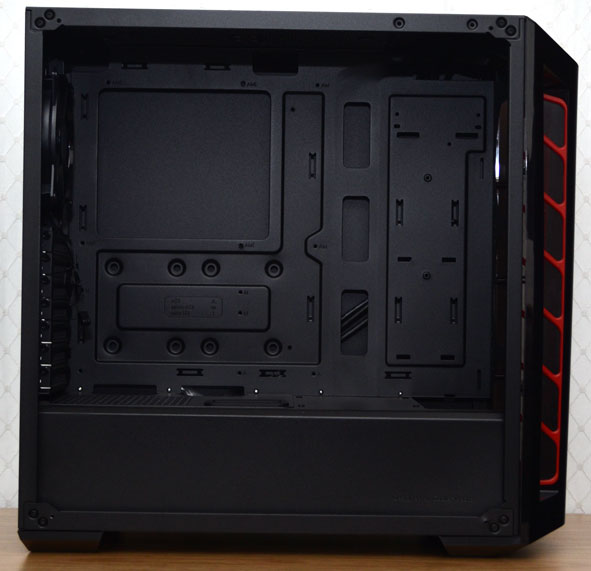
Up top, you can mount your coolers. You may get some radiators here, but it’s unlikely, so stick with fans only here I think.
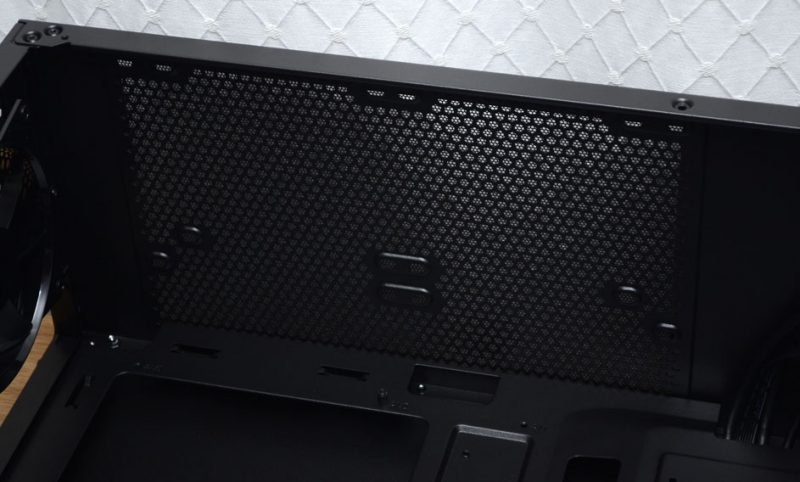
The bottom has another nice surprise, a full-size PSU shroud built-in. This comes with PSU ventilation, vertical GPU cable routing with grommet, and a cutaway at the front for mounting a thick radiator. I’m most happy about the vertical routing hole, it’s perfect for the GPU power cables!
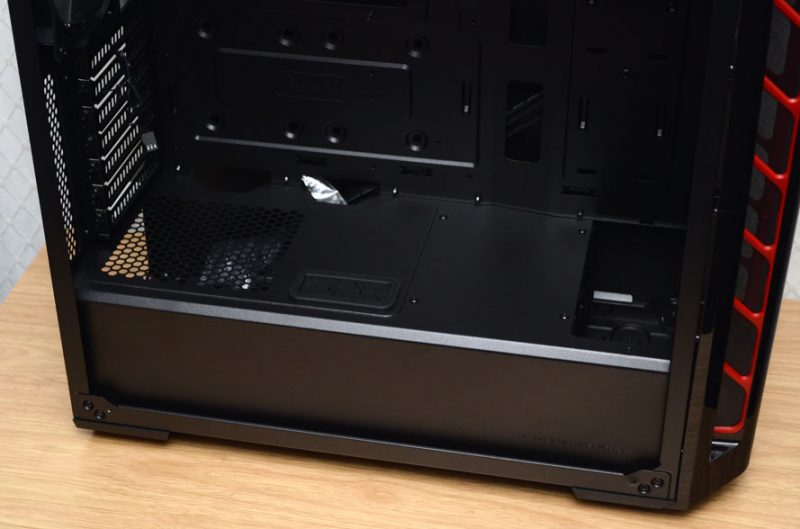
In the rear, there are seven expansion slots, each with a reusable ventilated cover. You can mount two SSDs behind the motherboard too, which screw in from this side, so fit them before you add the motherboard!
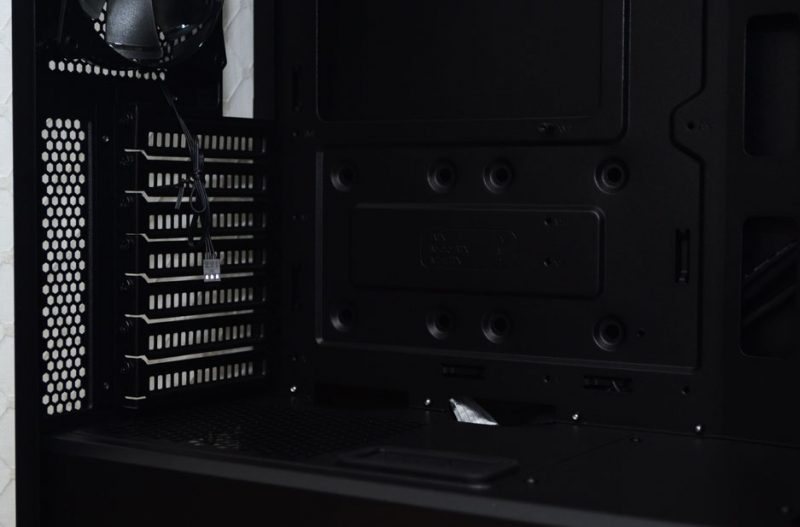
There’s one pre-installed fan in the back, perfect for the exhaust.
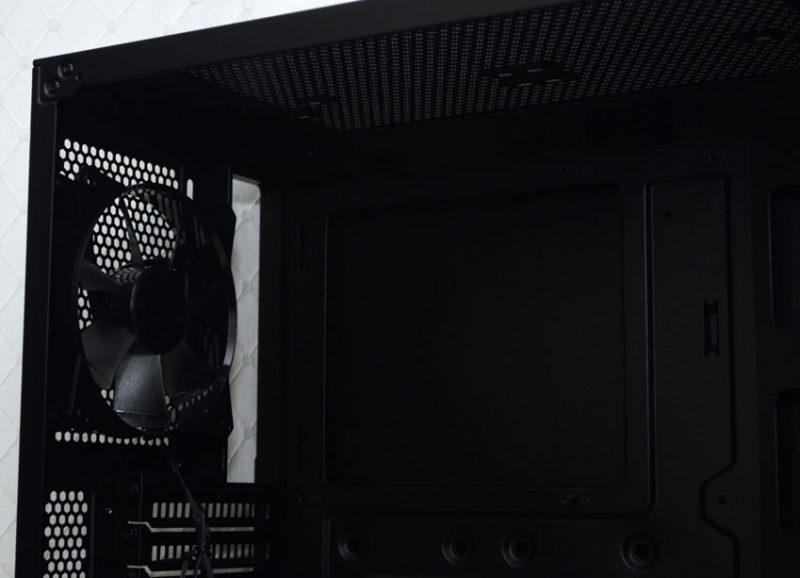
Amazingly, there are no fans in the front, which sucks big time. However, if you’re wanting to install something like a 360mm AIO for you CPU, mount it up in the front and kill two birds with one stone. If you’re not going AIO and wanting to air cool, order some fans!
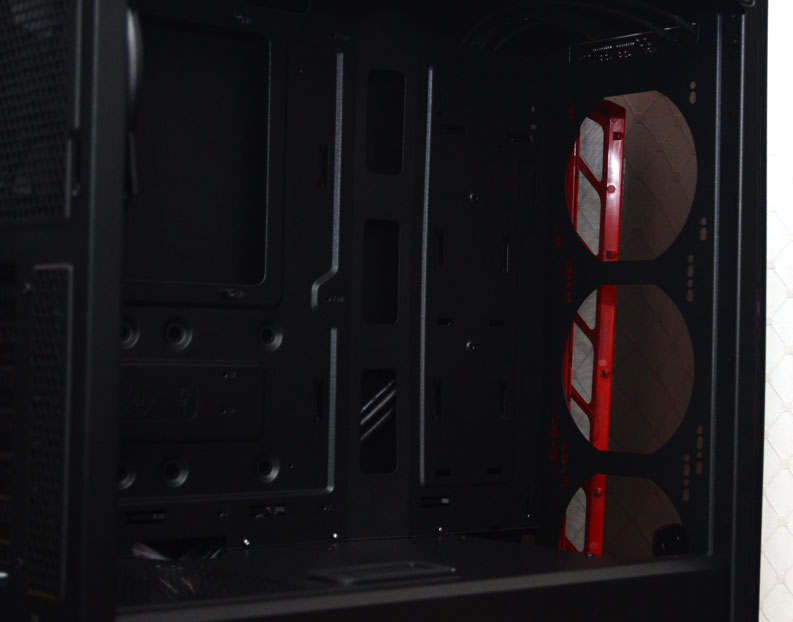
The huge cut-out is great, as it means the full height of the front panel can be used for thicker radiators.
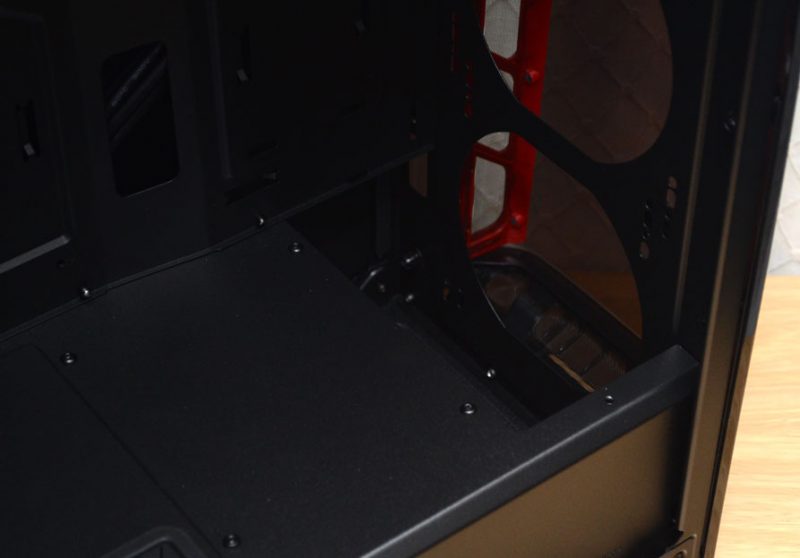
Behind the motherboard tray, there is a good amount of cable routing space. Furthermore, there are lots of cable tie loops. If that’s not enough, you can cram your excess cables under the PSU shroud anyway! Woo-hoo!
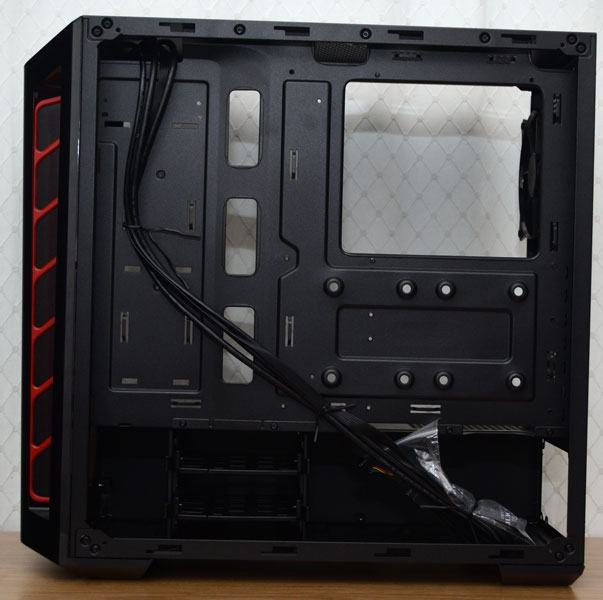
The HDD bay is fixed under the PSU shroud, hiding your ugly 3.5″ drives out of sight. You can mount 2.5″ drives here too using the included screws.
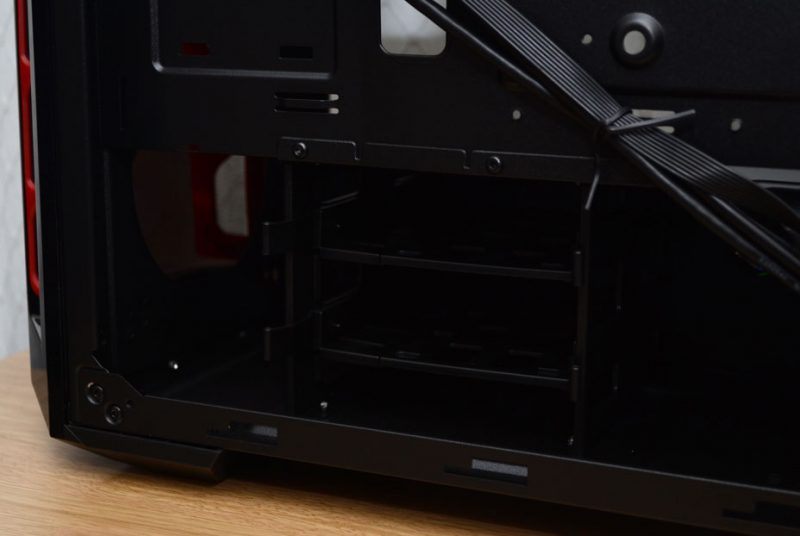
The PSU bay is a good size, nothing massive, but more than enough for standard ATX units and modular connectors.
